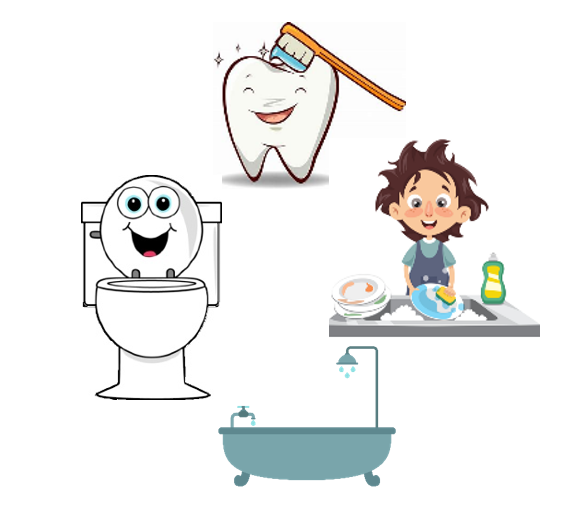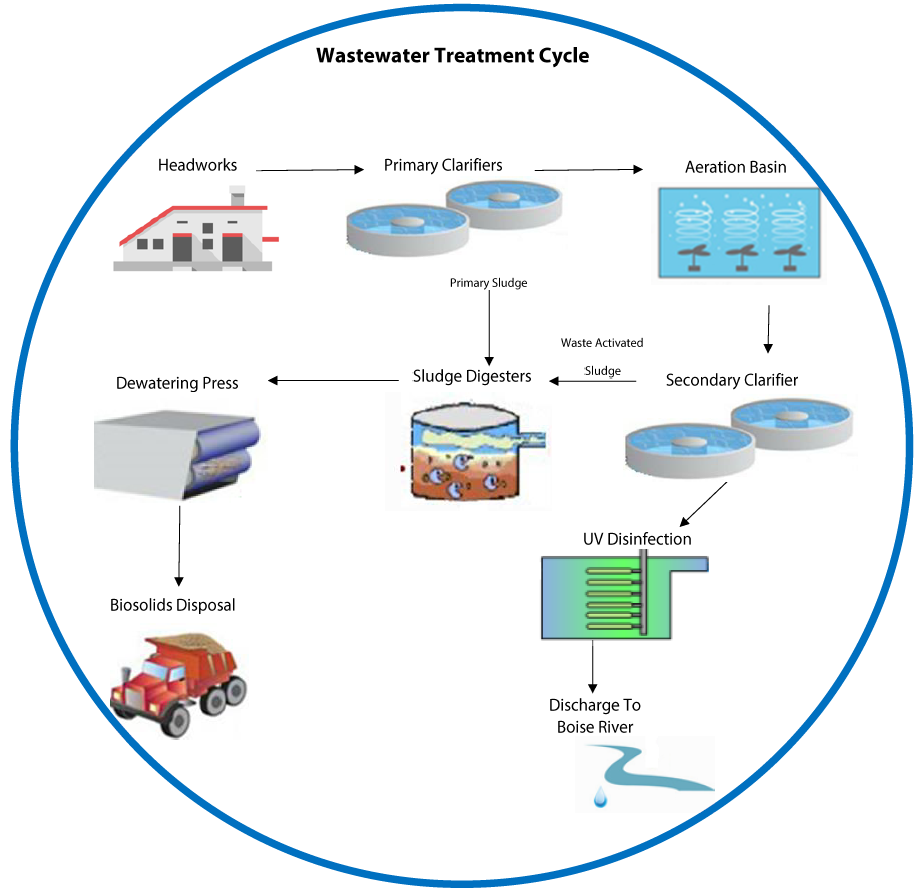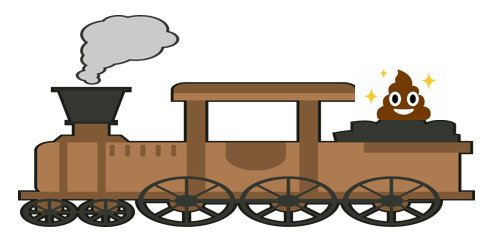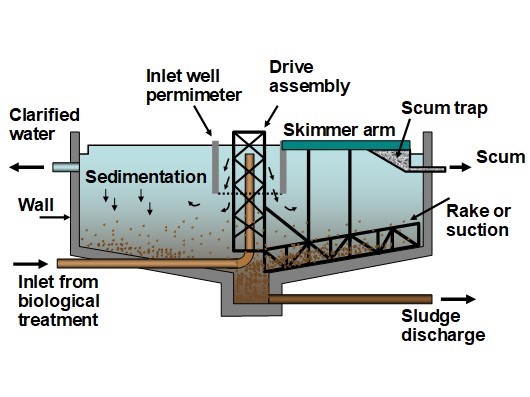Wastewater 101
What Does the Wastewater Treatment System Entail?
The City of Caldwell Wastewater Treatment System is comprised of thousands of feet of sewer lines, 16 lift stations, 4,970 manholes, and ultimately the Wastewater Treatment Plant. The plant processes and disinfects the wastewater to a DEQ and EPA approved level for reintroduction into the Boise River.
How Does It Work?
 The Wastewater Treatment Plant accelerates nature's way of cleaning water, and is the city's choice to prevent water pollution. Most of us don't think about what happens to our water after we brush our teeth, wash the dishes, take a shower, or flush the toilet.
The Wastewater Treatment Plant accelerates nature's way of cleaning water, and is the city's choice to prevent water pollution. Most of us don't think about what happens to our water after we brush our teeth, wash the dishes, take a shower, or flush the toilet.
From our homes and businesses, the water flows through underground pipes to the Wastewater Treatment Plant, where it is treated by multiple processes to remove the pollutants before entering the Boise River.

Residential and commercial wastewater travels from the private sewer lines, through to lift stations, which then push the sewer water to the treatment plant to begin cleaning.


There are different methods used to process wastewater. The City of Caldwell Wastewater Treatment Plant uses an activated sludge, biological nutrient system, with tertiary treatment.
The treatment train starts its journey at Headworks. This is where the water flows in from all of the city sewer lines and lift stations. Headworks is where the wastewater is screened for grit removal. I.E. many of the solids and undesired material is cleared out here.

Next it's off to the primary clarifiers. These clarifiers remove floating and settled solids through sedimentation. This process reduces the amount of suspended solids and pollutants in the water. Solids settle at the bottom as primary sludge and are pumped off to our digesters to begin the waste activation process. The solids at the top are skimmed off and moved over to the digesters as well.
The next stop is the selector basin. This is where the denitrification and phosphorous removal occurs. Immediately after, the water is pumped to the aerobic aeration basins, where microbes grow, feeding on organic material, providing the oxygen to bacteria that break down the organic matter.

Once the aeration process is complete, the wastewater moves on to a secondary clarification process. This continues the process of removing solids and other material. Any additional solids are pumped out to the digesters as waste activated sludge.

The water moves on, and dual media granular filtration provides tertiary treatment. UV disinfection provides further disinfection to the water, and final aeration.
 The water is now clean and ready to discharge to the Boise River!
The water is now clean and ready to discharge to the Boise River!
Now, what happens to all that sludge? The solids are processed through a dissolved air flotation thickener, are anaerobically digested, and stored in two sludge lagoons. The sludge passes through a dewatering belt press prior to being hauled to a municipal landfill. Our sludge is Class B sewage sludge.